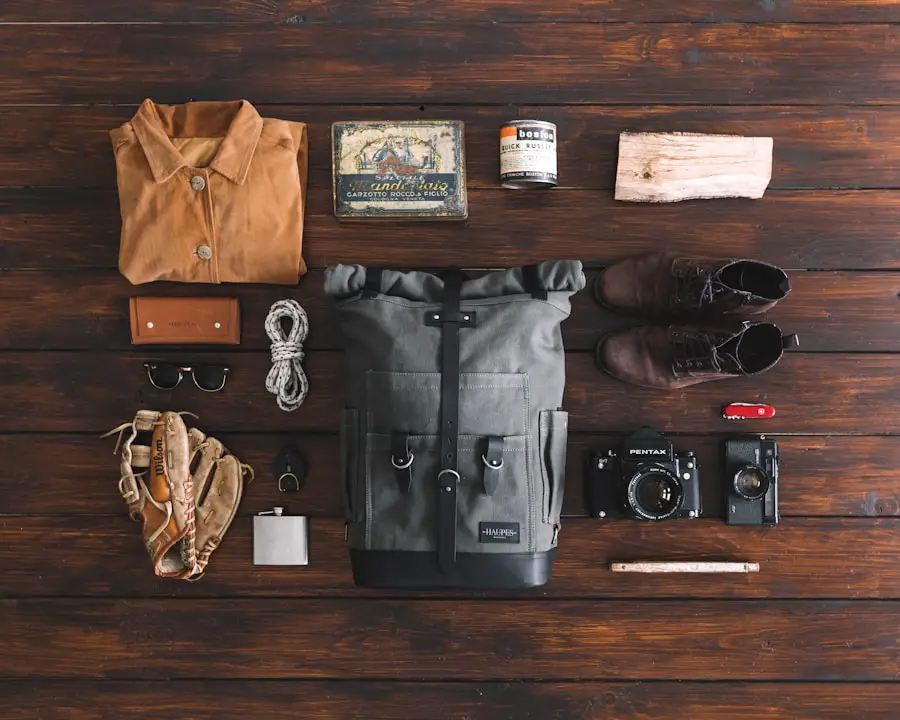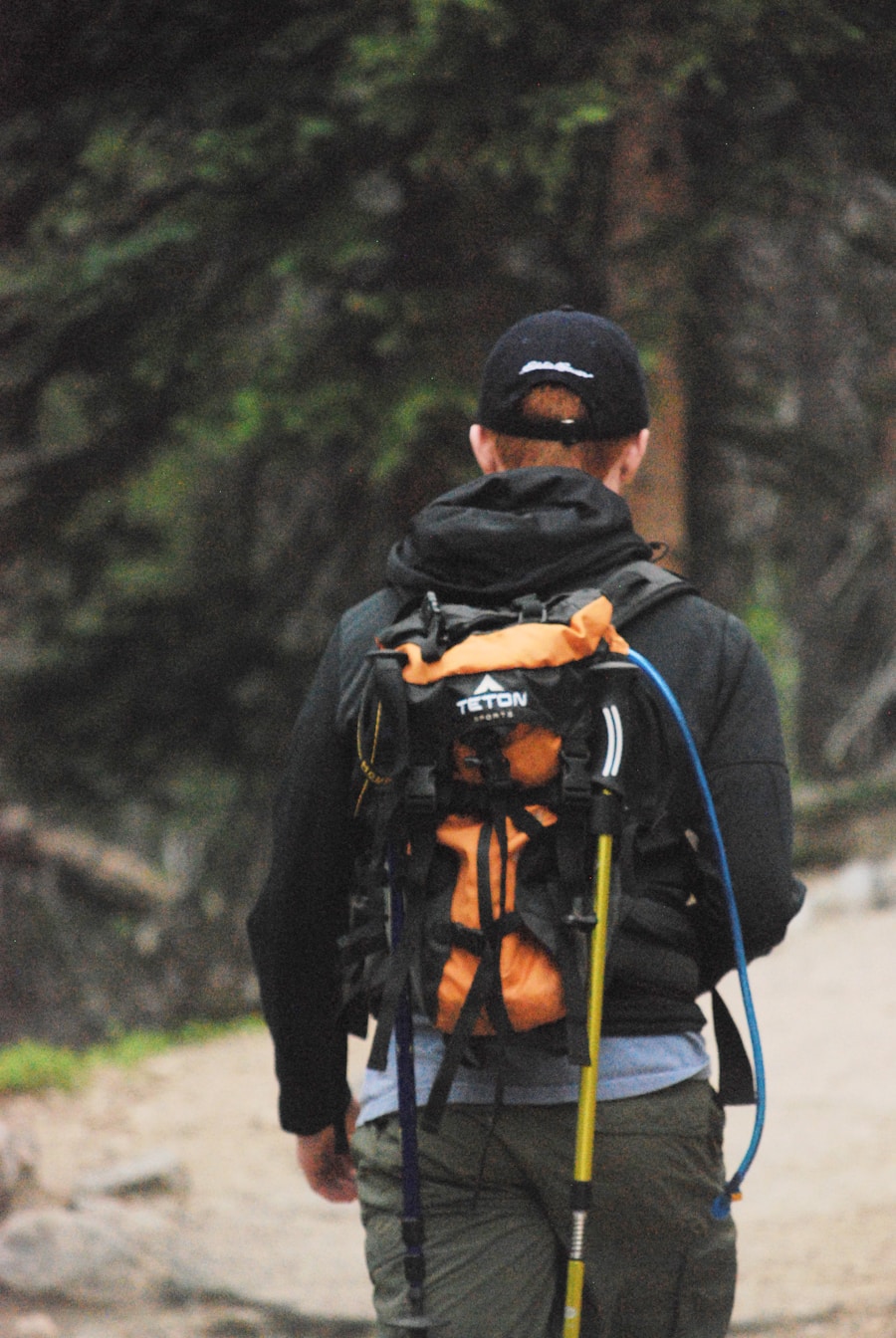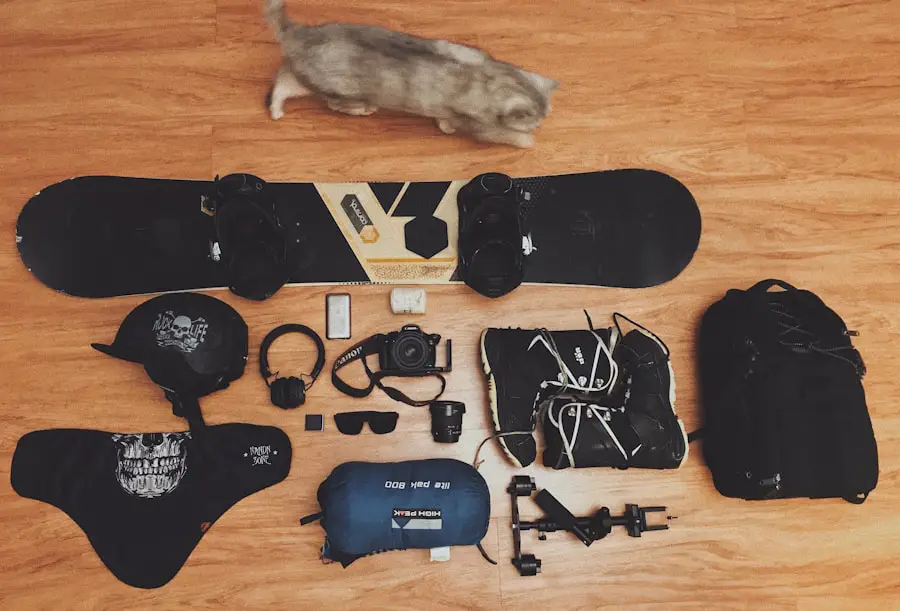When embarking on an outdoor adventure, the right clothing and footwear are paramount to ensuring comfort and safety. The choice of clothing should be dictated by the climate and terrain of the area you plan to explore. For colder climates, layering is essential.
A moisture-wicking base layer helps to keep sweat away from the skin, while an insulating mid-layer, such as fleece or down, provides warmth. The outer layer should be waterproof and windproof to protect against the elements. In contrast, for warmer climates, lightweight, breathable fabrics that offer UV protection are ideal.
Quick-drying materials can be particularly beneficial in humid environments or when engaging in water activities. Footwear is equally critical, as it directly impacts mobility and stability. Hiking boots should provide adequate ankle support and have a rugged sole for traction on uneven surfaces.
For more casual walks or day hikes, trail runners may suffice, offering a balance between comfort and grip. It’s also important to consider the fit of the footwear; a proper fit can prevent blisters and discomfort during long treks. Additionally, wearing moisture-wicking socks can further enhance comfort by reducing friction and keeping feet dry.
In colder conditions, insulated boots with thermal linings can help maintain warmth, while gaiters can be used to keep snow and debris out.
Key Takeaways
- Choose clothing and footwear suitable for the weather and terrain of your camping destination
- Pack navigation tools like a map, compass, and GPS, along with safety gear such as a whistle and flashlight
- Ensure your backpack is comfortable and durable, and pack essential camping equipment like a tent, sleeping bag, and cooking supplies
- Bring enough food and water for the duration of your trip, and consider options for purifying water from natural sources
- Pack a first aid kit with essential medical supplies and personal care items like sunscreen and insect repellent
- Include emergency supplies like a multi-tool, fire starter, and emergency shelter in your camping gear
- Consider bringing technology and communication devices like a cell phone, portable charger, and two-way radios
- Don’t forget miscellaneous items like a multi-purpose knife, duct tape, and extra batteries for your gear
Navigation and Safety Gear
Navigating through unfamiliar terrain requires reliable tools and equipment to ensure safety and direction. A topographic map is an essential item for any outdoor enthusiast, providing detailed information about the landscape, including elevation changes, trails, and natural features. While digital maps on smartphones can be convenient, they rely on battery life and signal strength, which may not always be available in remote areas.
Therefore, carrying a physical map along with a compass is advisable for traditional navigation methods. Understanding how to read a map and use a compass is a vital skill that can significantly enhance your ability to navigate effectively. In addition to navigation tools, safety gear is crucial for mitigating risks associated with outdoor activities.
A whistle can be a lifesaver in emergencies, allowing you to signal for help without exhausting your voice. A headlamp or flashlight is essential for visibility during nighttime excursions or in low-light conditions; opting for LED models can provide longer battery life and brighter illumination. Furthermore, a multi-tool or knife can serve various purposes, from preparing food to making repairs on gear.
Personal locator beacons (PLBs) or satellite messengers are also becoming increasingly popular among adventurers, providing a means of communication in areas without cell service and enabling users to send distress signals if needed.
Backpack and Camping Equipment

Selecting the right backpack is fundamental for any camping or hiking trip, as it serves as the primary means of carrying all necessary gear. Backpacks come in various sizes and styles, typically categorized by their capacity measured in liters. Daypacks are suitable for short excursions, while larger backpacks designed for multi-day trips offer additional space for sleeping bags, tents, and cooking equipment.
When choosing a backpack, consider features such as adjustable straps for comfort, ventilation systems to reduce sweating, and multiple compartments for organization. Camping equipment encompasses a range of items that contribute to a comfortable outdoor experience. A quality tent is essential for shelter; it should be lightweight yet durable enough to withstand weather conditions.
When selecting a tent, consider factors such as size (to accommodate the number of occupants), ease of setup, and waterproof ratings. Sleeping bags are another critical component; they come in various shapes and temperature ratings to suit different climates. A sleeping pad can provide insulation from the cold ground while adding comfort for a good night’s sleep.
Cooking gear, including portable stoves or campfires, pots, and utensils, is also necessary for meal preparation in the wilderness.
Food and Water Supplies
| Country | Population | Food Production (tonnes) | Water Consumption (litres per capita) |
|---|---|---|---|
| United States | 331,002,651 | 758,000,000 | 3,982 |
| China | 1,439,323,776 | 1,400,000,000 | 1,071 |
| India | 1,380,004,385 | 1,200,000,000 | 1,123 |
| Brazil | 212,559,417 | 123,000,000 | 1,545 |
Proper nutrition and hydration are vital during outdoor activities to maintain energy levels and overall health. When planning meals for a camping trip or hike, consider lightweight and non-perishable food items that are easy to prepare. Freeze-dried meals are popular among backpackers due to their convenience; they require only hot water to rehydrate and provide balanced nutrition.
Energy-dense snacks such as nuts, trail mix, energy bars, and jerky are excellent choices for quick boosts during strenuous activities. Water supply is equally important; carrying enough water is crucial for hydration but can add significant weight to your pack. A general rule of thumb is to drink about half a liter of water per hour during moderate activity in moderate temperatures.
If you’re hiking in areas where water sources are available, consider bringing a water filter or purification tablets to ensure safe drinking water. Hydration bladders are also popular among hikers; they allow for easy sipping while on the move without needing to stop and dig out a water bottle.
First Aid Kit and Personal Care Items
A well-stocked first aid kit is an indispensable part of any outdoor adventure. It should include basic supplies such as adhesive bandages, antiseptic wipes, gauze pads, adhesive tape, tweezers, scissors, and pain relievers like ibuprofen or acetaminophen. Additionally, consider including specialized items based on your activities; for instance, if you’re hiking in areas with high insect populations, insect repellent can help prevent bites that may lead to infections or allergic reactions.
It’s also wise to include any personal medications you may need during your trip. Personal care items should not be overlooked when packing for an outdoor excursion. Sunscreen is essential for protecting your skin from harmful UV rays; choose a broad-spectrum sunscreen with an SPF of at least 30 and reapply it regularly throughout the day.
Lip balm with SPF can also help protect your lips from sunburn and chapping. Hygiene items such as biodegradable soap, toothbrushes, toothpaste, and toilet paper should be included as well; maintaining personal hygiene is important even in the wilderness to prevent illness.
Emergency Supplies

Being prepared for emergencies can make all the difference in outdoor settings where help may not be readily available. An emergency blanket or bivy sack can provide warmth in unexpected situations where you may need to spend the night outdoors due to injury or getting lost. These lightweight items take up minimal space in your pack but can significantly increase your chances of survival in cold conditions.
Fire-starting tools are another critical component of emergency supplies; waterproof matches or lighters should be included alongside fire starters like cotton balls soaked in petroleum jelly or commercial fire starter kits. Having the ability to start a fire not only provides warmth but also allows you to cook food and purify water if necessary. Additionally, consider carrying a signaling device such as a mirror or whistle that can attract attention if you find yourself in distress.
Technology and Communication Devices
In today’s digital age, technology plays an increasingly important role in outdoor adventures. GPS devices can provide precise location tracking and navigation assistance; however, it’s essential to have backup methods like maps and compasses since electronic devices can fail due to battery depletion or lack of signal. Many modern GPS units are designed specifically for outdoor use and come equipped with features such as topographic maps and waypoint marking.
Communication devices are also vital for safety during outdoor excursions. While cell phones are commonly used for communication, their effectiveness can be limited in remote areas without service coverage. Satellite phones offer a reliable alternative for those venturing into isolated regions; they allow users to make calls from virtually anywhere on the planet.
Personal locator beacons (PLBs) are another option; these devices send distress signals with your location coordinates to emergency services when activated.
Miscellaneous Items
Beyond the essentials already discussed, there are several miscellaneous items that can enhance your outdoor experience or provide added convenience during your trip. A portable camp chair can offer comfort during breaks or meals at your campsite; lightweight options are available that fold easily into compact sizes for transport. A lightweight tarp can serve multiple purposes: it can provide additional shelter from rain or sun when set up over your campsite or serve as a ground cover under your tent.
Another useful item is a portable power bank; these devices allow you to charge electronic devices like phones or GPS units while on the go. This is particularly important if you rely on technology for navigation or communication during your adventure. Additionally, packing a small notebook or journal can provide an outlet for reflection or documentation of your experiences in nature; capturing thoughts or sketches can enhance your connection with the environment around you.
In summary, preparing adequately for outdoor adventures involves careful consideration of clothing and footwear choices, navigation tools, camping equipment, food supplies, first aid kits, emergency gear, technology devices, and miscellaneous items that enhance comfort and convenience. Each component plays a vital role in ensuring safety and enjoyment while exploring the great outdoors.
If you’re planning a hiking trip, it’s essential to know what to pack to ensure a safe and enjoyable adventure. One helpful article to check out is “Exploring Ireland: Car-Free Travel Tips” which provides valuable insights on how to navigate the beautiful landscapes of Ireland without a vehicle. This article offers tips on using public transportation, walking routes, and other sustainable travel options to explore the stunning scenery of Ireland. Make sure to read this article before packing for your hiking trip to ensure you have everything you need for a memorable experience. Source
FAQs
What are the essential items to pack for a hiking trip?
Some essential items to pack for a hiking trip include a backpack, water bottle, map and compass, first aid kit, extra clothing, food and snacks, and a multi-tool or knife.
What type of clothing should I pack for a hiking trip?
It is important to pack moisture-wicking and breathable clothing for a hiking trip. This includes a moisture-wicking base layer, insulating layer, and waterproof outer layer. Additionally, it is important to pack extra socks and a hat for sun protection.
What kind of footwear is recommended for a hiking trip?
Sturdy and comfortable hiking boots or shoes with good traction are recommended for a hiking trip. It is important to choose footwear that provides ankle support and protection from rocks and debris.
What kind of food and snacks should I pack for a hiking trip?
It is important to pack lightweight and high-energy foods for a hiking trip, such as trail mix, energy bars, dried fruits, and nuts. Additionally, it is important to pack a hearty and nutritious meal for lunch, such as sandwiches or wraps.
What safety items should I pack for a hiking trip?
Some safety items to pack for a hiking trip include a first aid kit, emergency whistle, headlamp or flashlight, and a multi-tool or knife. It is also important to pack a map and compass, and to let someone know your hiking plans and expected return time.
